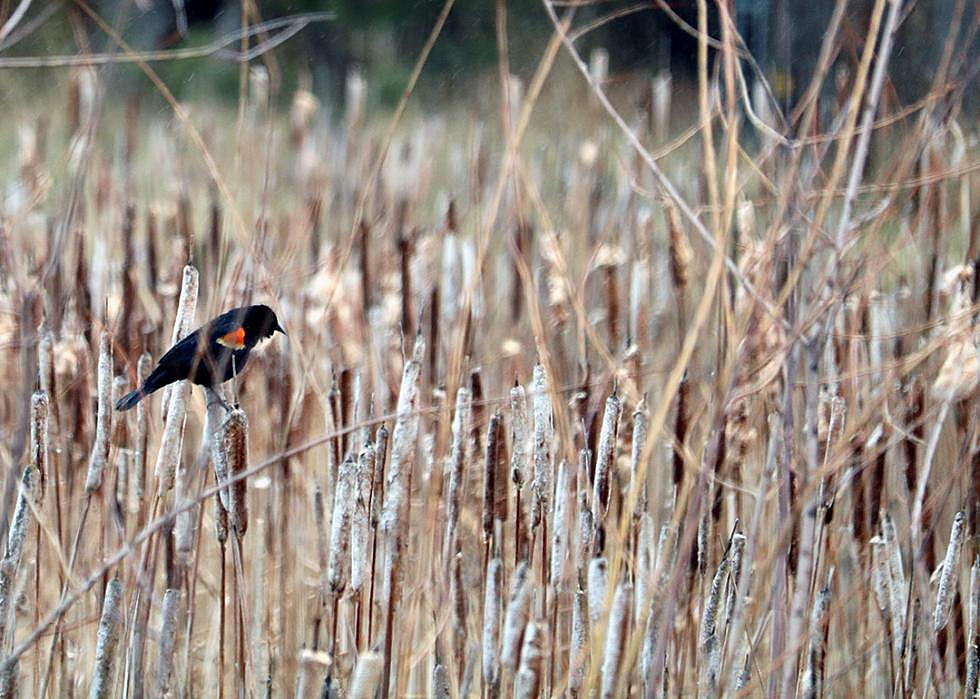
Lewis and Clark neighborhood sets out to restore Missoula’s backyard wetlands
Dave Westfall looks across the Missoula Valley and sees an archipelago of small wetlands that bring a certain wildness and beauty into the city.
Waterfowl, both migrants and year-round residents, abound, along with songbirds. And mammals, large and small. Water-loving trees. Aquatic plants and the occasional amphibian.
He and his neighbors who live near one of those islands want their backyard wetlands to be the model for all the rest.
So they’re launching an effort to restore and enhance Bancroft Ponds, and in doing so hope to develop and build the larger community’s engagement with all of Missoula’s relic wetlands.
“We have these little spots throughout Missoula,” said Westfall. “If you look at them as a human, you see a little pond. But if you’re a bird or a duck or a fish, you figure out how to get from one to another, you see the interconnected pieces.”
Still, Westfall is realistic about the semi-natural state of this urban archipelago. Just look at Bancroft Ponds: The watershed begins to the east, at the headwaters of Pattee Creek, which eventually turns into a canal, which turns into a ditch, which flows into a series of manmade ponds – essentially created for flood control.
But the Lewis and Clark neighborhood, where Westfall is a member of the neighborhood council and now of the Bancroft Ponds steering committee, loves its tiny wetland and is intent on its preservation.
The revitalization effort has three objectives: Protect and foster the diversity of wildlife habitat (“It sounds simple, but it’s a lot); promote educational opportunities for the nearby schools (Russell and Lewis and Clark elementaries, Sentinel High and Washington Middle School); and develop and build community engagement (“This is bigger than the Lewis and Clark neighborhood”).
“We want to make a model of Bancroft Ponds,” Westfall told the Missoula City Council recently. “At the end of the day, we want to create something.”
The ponds, which sit along 34th Street at Bancroft and Stephens avenues, need “hands in the dirt,” he said. “We need to get rid of the invasive trees and plant new ones. We need to rejuvenate and improve the habitat.
“We want to bring it to a point where people can really use it and walk and listen and reflect. We want to create a place where people can be serene and tranquil and get in touch with nature in this tiny little spot that’s smack dab in the middle of Missoula.”
Former Ward 4 City Councilman Jon Wilkins has signed onto the effort, as has the city’s open lands manager and Montana Fish, Wildlife and Parks.
The group is recruiting representatives of the nearby schools and interested neighbors, and recently brought in an expert from the National Wildlife Federation.
It is clearly the most important issue for the neighborhood, Westfall said. “People love the ponds and want them to be an important part of the Lewis and Clark area.”
It’s not the only issue the Lewis and Clark Neighborhood Council is tackling, though.
Also on the group’s radar is the need to slow down traffic coming and going from Sentinel High School via nearby residential streets – Dearborn, Mary, Fairview, Livingston.
They’re working with Ben Weiss at the city to establish a Special Improvement District that would pay for calming circles on blocks closest to the school.
The city of Missoula’s experience in the University District has provided data showing a 2 mph reduction in speed on streets with calming circles – a 10 percent reduction. And the cut-through numbers are up to 7 percent less, a meaningful reduction in traffic.
The work would cost about $100,000 in the Sentinel neighborhood, and an SID would cost the 500 homeowners about $200 each, spread out over 10 years, according to Westfall.
The final item on the neighborhood’s to-do list? Recycling.
Anecdotal evidence and an informal survey showed about one-third to one-half of the neighborhood residents already either pay to have their recycling hauled away or deliver their collection to a recycling center.
The goal is to increase that number to 90 percent or better, then to approach the city’s private recyclers about a discounted group rate for pickup service, Westfall said.
At a recent neighborhood meeting, there was a “pretty fair amount of enthusiasm from the neighbors to do something,” he said. “We’d like to create a model for Missoula in the Lewis and Clark neighborhood.”
